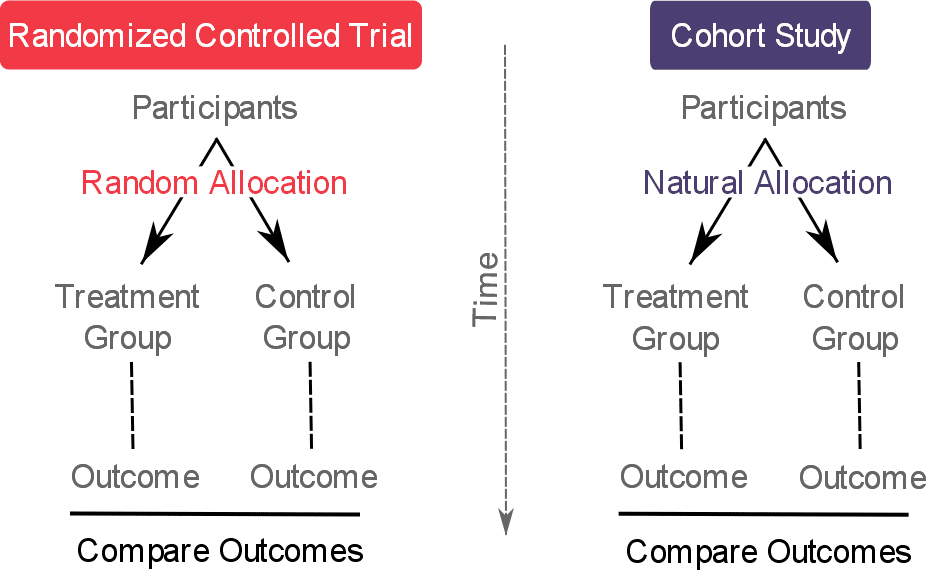Table Of Content

These studies may be prospective, retrospective, or a combination of both of these types. Since at the time of entry into the cohort study, the individuals do not have outcome, the temporality between exposure and outcome is well defined in a cohort design. If the exposure is rare, then a cohort design is an efficient method to study the relation between exposure and outcomes. A retrospective cohort study can be completed fast and is relatively inexpensive compared with a prospective cohort study. Follow-up of the study participants is very important in a cohort study, and losses are an important source of bias in these types of studies.
Increased cardiovascular risk in Korean patients with systemic lupus erythematosus: a population-based cohort study ... - Nature.com
Increased cardiovascular risk in Korean patients with systemic lupus erythematosus: a population-based cohort study ....
Posted: Thu, 11 Jan 2024 08:00:00 GMT [source]
Framingham Heart Study

Our objective is to estimate the incidence of cardiovascular events in patients with psoriasis. All the individuals who are diagnosed with psoriasis are eligible for being included in this cohort study. However, one has to ensure that none of them have cardiovascular events at baseline. Thus, they should be thoroughly investigated for the presence of these events at baseline before including them in the study.
Current and historical cohorts
There are statistical methods to handle missing data in studies – such as complete case analysis, available case analysis, single imputation, or multiple imputations. The investigator should work with a statistician to address missing data in the dataset. These methods should also be described in the statistical analysis section of the manuscript.
Cohort Study: Definition, Designs & Examples
The number of lung cancer cases was adjusted downward to reflect a projected lower incidence in the cohort because of reduced smoking levels (see below). The table also shows minimal detectable relative risks (MDRs), comparing the highest to the lowest quartile of exposure, assuming 80 percent power and a type I error of 0.05. These MDRs were computed assuming a steady trend in the relative risk over the four quartiles of exposure (20).
The questionnaire was extensively pretested in order to assure that the instrument could be self-administered by individuals with less than a high school education and would yield reliable information. We began with face-to-face administration of an early draft by trained interviewers who identified ambiguities, awkward wording of questions, and problems in the layout of questions. After appropriate revisions, the questionnaire was mailed to a small (130 subjects) sample of residents in 1989. Following this mailing, a subset of respondents and non-respondents were telephoned to determine reasons for their participation or not, their reaction to the cover letter about the study, and comments on questionnaire content. One result of this activity was a recognition that many Latinos could not complete the form in English. It is defined as the number of participants who develop the outcome of interest (heart disease and stroke) divided by the person-time (days, months, years) at risk during follow-up (Alexander, 2015).
University of Utah
Our intention was to establish a cohort that would include all socioeconomic strata within each ethnic group, so that generalization of findings to the population at large would be possible. Because drivers' license files in both Hawaii and California include the names of most resident adults, encompass all socioeconomic strata, and contain information on age and sex, we selected this source as the primary sampling frame for the study. An additional source in Hawaii was the voters' registration file, which was used to identify names not on the drivers' license file, especially among older Japanese-American women. An additional source of African-Americans in California was the Health Care Financing Administration (HCFA) files, as described below. To address the racial and socio-economic factors that lead to high rates of suspensions and juvenile arrests through a peer-led support program, leadership development and systems change campaign led by system-involved youth in Orange County.
Black Youth Leadership Project
They do not assess how often a particular factor causes the disease, which would help scientists understand how dangerous that factor is. They involve scientists influencing the group of participants, often by giving a drug or therapy to determine its impact. Scientists then compare this data with the data they collect from a group of people who are receiving a placebo.
We are grateful to everyone who participated in this research or worked on this project to make it possible. We would like to thank Strategic Theme Dynamics of Youth (Utrecht University) in their support to set up the PROactive cohort study according to FAIR principles and open science. The PROactive cohort study working group consists of the authors of this paper, and Dr. A. Van Royen-Kerkhof (paediatric systematic autoimmune diseases), Prof. Dr. J. Frenkel (paediatric auto inflammatory conditions), Dr. J.M van Montfrans (primary immunodeficiency’s), Dr. V.M. Wolters (paediatric inflammatory bowel disease), A.W. Hindriks-Keegstra (paediatric pain group), Dr. J.M.P.J. Breur (paediatric congenital heart disease), Dr. M. Lilien (paediatric chronic kidney disease) and Prof dr. M. In particular we would like to thank Prof. Dr. M.A. Grootenhuis for her involvement in the realization of this cohort, collaboration with the inclusion of oncology patients (from 2017 to 2020) and her suggestions for improving this design paper.
The value of a cohort study depends on the researchers' capacity to stay in touch with all members of the cohort. In cohort studies, on the other hand, researchers identify a group before any of the subjects have developed the disease. Then after an extended period, they examine any factors that differed between the individuals who developed the condition and those who did not.
Panel studies are a type of prospective study, while cohort studies can be either prospective or retrospective. However, cross-sectional studies analyze information about a population at a specific point in time, while cohort studies are carried out over longer periods. Cohort studies usually require multiple months or years before researchers are able to identify the causes of a disease or discover significant results. Because of this, they are often more expensive than other types of studies. Retrospective studies, though, tend to be cheaper and quicker than prospective studies as the data already exists. In cohort studies, the participants must share a common factor or characteristic such as age, demographic, or occupation.
For example, people with lower incomes could have more limited opportunities to exercise in a safe environment as well as a higher depression risk. Keep reading to learn more about cohort studies and their uses, advantages, and disadvantages. In addition, this article compares cohort studies with other forms of research. Using current weight and height information, we computed a body mass index (BMI) for each subject. Obesity among men, i.e., BMI ≥30, is highest among Native Hawaiians (35.1 percent).
Nested case-controls have the advantage of reducing the number of participants that require details follow up or diagnostic testing to assess outcome or exposure status. However, this will also reduce the power of the study, when compared to larger cohort the study population is drawn from. Another type of longitudinal study is called a panel study which involves sampling a cross-section of individuals at specific intervals for an extended period. Weeks, months, or years later, depending on the duration of the study design, the researchers will examine any factors that differed between the individuals who developed the condition and those who did not. Before any appearance of the disease is investigated, medical professionals will identify a cohort, observe the target participants over time, and collect data at regular intervals.

No comments:
Post a Comment